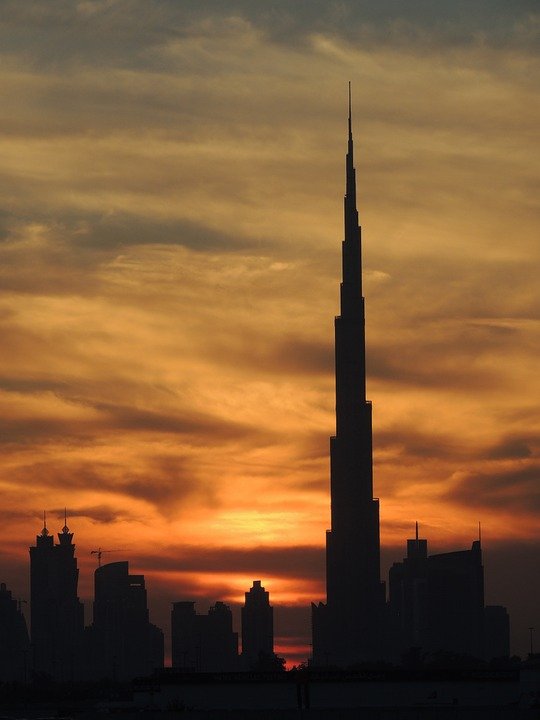International: Heat Stress in the Middle East

For SHP, Scott Safety examines the risks of working in the heat in the Middle East.
The issue of heat stress is a real concern for employers and their workforce in the Middle East and it is easy to understand why. Temperatures between May and September can soar as high as 50˚c making heat related illness such as heat exhaustion, heat stress and heat stroke, a very serious concern. Exacerbating this issue is the increasing trend between rapid development in these countries and numbers of labour intensive industries such as construction, mining and oil and gas operations.
In order to prevent unnecessary illness or even death from heat stress, The UAE Ministry of Labour imposes a ban on outdoor working every summer between midday and 3pm; and each year intensifies its inspection campaigns to increase awareness of the severity of the issue. Violations of the annual ban are penalised by imposing fines or closure of the worksite, depending on the offence.

According to the Health & Safety Executive (HSE), heat stress occurs when the body’s means of controlling its internal temperature, such as sweating, starts to fail. Symptoms of the condition can include: fainting, heat stroke, heat exhaustion, muscle cramps, heat rash and severe thirst.
In addition to climatic changes, heat stress can be induced by other factors such as work rate and worker’s clothing and therefore it is imperative that manufacturers develop equipment that uses lightweight, breathable fabrics and materials where possible. There is a responsibility too on employers to choose the most appropriate equipment for the work and to ensure the correct training is given so that the worker wears the equipment properly.
“Scott Safety invests a considerable amount of time in the development of our personal protective equipment (PPE) to ensure we design lightweight products. We use the best performing materials that offer the correct level of protection,” explains Chris Ellerby, Senior Global Product Manager.
Ensuring workers wear PPE is an on-going challenge, especially if the pieces are not designed to work together. PPE incompatibility makes the equipment uncomfortable and can lead to the worker getting unnecessarily hot; “Our range of PPE has been specifically developed so that it complements each other and can be worn comfortably, regardless of the heat. There is much research to show that good product compatibility will improve the overall comfort for the wearer, regardless of their working environment and therefore ensure that the products will continue to be worn without detriment to the wearer.”
Scott Safety’s Firstbase 3 range of PPE includes the multiple application bump cap First Base. This innovative bump cap is designed to provide protection to the wearer against the effects of head striking against hard, stationary objects. It is made from a breathable fabric that allows high levels of ventilation that will reduce heat stress and improve wearer comfort. Some additional standard features also work to reduce the effects of heat stress such as the wide and absorbent sweatband. Chris Ellerby who has worked on the designs of this product since its inception explained: “our bump caps have proved popular around the world as they really do provide first class head protection in a lightweight and comfortable design.”
But compatibility does not just centre on weight and comfort. There is no governing body that dictates that all equipment must meet certain compatibility standards making it harder for manufacturers to develop product compatibility. Ultimately what this means is that unless equipment is purchased from the same manufacturer and therefore designed to work together, good fit and optimum comfort cannot necessarily be guaranteed. And, equipment designed and supplied from one manufacturer will most likely have been approved to work together too.
Working in environments where more substantial personal protection is required such as confined spaces or contaminated air environments is also a growing requirement in the Middle East. In these situations increased respiratory protection may well be required and this will involve wearing more complex equipment that could, if not designed well, add to heat stress levels. However, Scott Safety, renowned worldwide for its respiratory protection range, recently launched a new powered respirator specifically designed to reduce weight burden. Wearing a respirator over a period of hours can create a great physiological burden on the wearer because the sheer weight of the kit could increase the effort required to breathe. However, this new design incorporates a curved backplate and lightweight battery ensuring user comfort for long periods of use.
With its own facility in Abu Dhabi and a long proven tradition of understanding the needs of the industrial market across the region, Scott Safety has developed a range of solutions that allow users to work comfortably in the intense climate, safe in the knowledge that they are properly protected at all times.
For further information, please visit the Scott Safety’s website at www.scottsafety.com/emea.
International: Heat Stress in the Middle East
For SHP, Scott Safety examines the risks of working in the heat in the Middle East. The issue of
Safety & Health Practitioner
SHP - Health and Safety News, Legislation, PPE, CPD and Resources Related Topics
Inclusivity in PPE: The manufacturer’s perspective
Future-proofing safety: Five trends shaping the PPE landscape of tomorrow
Arco backs SHP campaign for PPE inclusivity



From my 17 years experience of managing health and safety in the Middle East (Qatar) the requirements of the UAE government are inadequate. Measuring the air temperature is not enough. Any heat stress policy must be based in the heat index. This takes into account humidity and radiated heat. Tracking the heat index throughout the year will show that action usually needs to be taken in April months before the “summer”. Additionally, the action level for heat index usually occurs around 8 am before the sun has reduced humidity levels. The policy should actions to be taken as the heat… Read more »